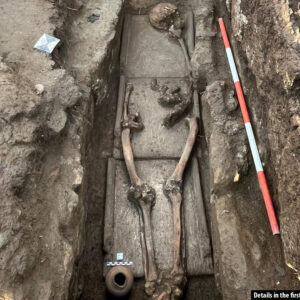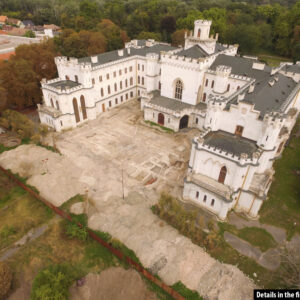Beneath the streets of Margate, Kent, lies a hidden gem that has baffled historians, archaeologists, and visitors for nearly two centuries—the Shell Grotto. Adorned with over 4.6 million shells meticulously arranged in intricate mosaics, this underground marvel is a testament to a bygone era. Despite its beauty, the Grotto’s origins and purpose remain a mystery. Was it a sacred temple, an eccentric folly, or something far more enigmatic? As one of the world’s most puzzling attractions, the Shell Grotto continues to captivate the curious and ignite the imagination.
Discovery of the Shell Grotto
The Shell Grotto’s story begins in 1835 when James Newlove, a local man, was digging a duck pond in his backyard. His son, upon exploring the hole, discovered a hidden underground passage lined with seashells. What was initially thought to be a simple cave turned out to be an elaborate and detailed space—over 70 feet long, with a circular chamber at the end, all covered in intricately arranged mosaics made entirely from shells.
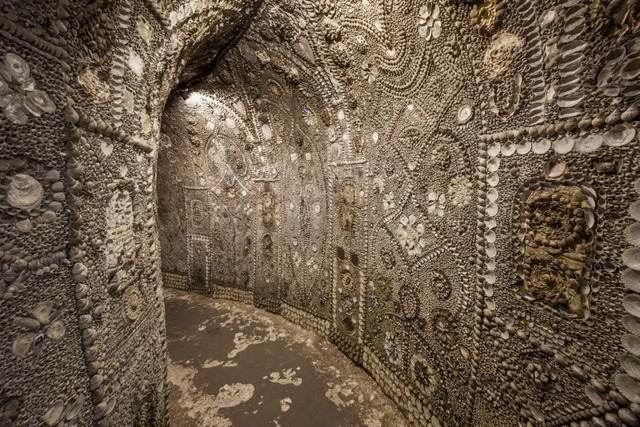
The discovery stunned Newlove, and he quickly opened the grotto to the public as a tourist attraction. However, the mystery surrounding the grotto’s origins and purpose only deepened with time, and despite extensive research, no one has been able to definitively determine who built it or why.
Video
Watch the video The Mystery of Shell Grotto to uncover the secrets behind this fascinating landmark.
Theories Behind the Grotto’s Origins
Over the years, various theories have emerged regarding the Shell Grotto’s origins. Each theory presents a different perspective, but none provide concrete answers. Let’s explore the most prominent theories that have sparked the curiosity of historians and visitors alike.
1. Ancient Temple Theory
One of the most popular theories suggests that the grotto served as a temple for an ancient civilization. The intricate patterns and symbols found in the mosaics have led some researchers to believe that the Shell Grotto could have been a sacred site, possibly used for sun worship or fertility rituals. The presence of geometric shapes and motifs reminiscent of ancient religious symbols has only fueled this theory. Some believe it could have been constructed during Roman or even Phoenician times, although there is no direct evidence to support this claim. The idea of the grotto as a place of worship or ceremony continues to intrigue those fascinated by ancient civilizations.
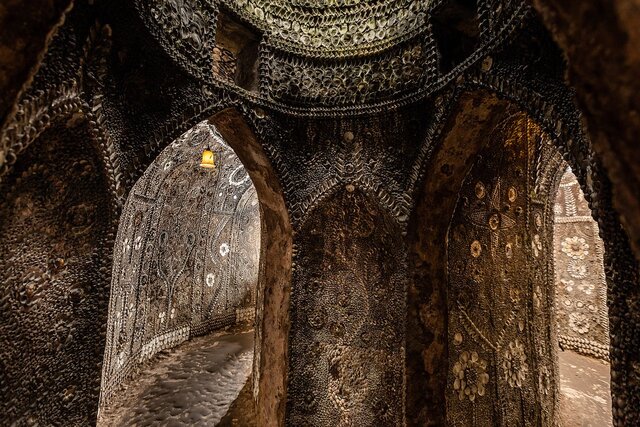
2. Medieval Construction
Another theory proposes that the grotto was built during the medieval era. The Middle Ages were a time of secrecy, and underground chapels or meeting places were not uncommon, especially during periods of religious persecution. The theory posits that the Shell Grotto may have served as a secret meeting place for a clandestine religious group or for people seeking refuge from outside threats. Its hidden nature and mysterious symbols support this possibility, though it remains purely speculative.

3. 18th or 19th-Century Folly
A more pragmatic theory suggests that the Shell Grotto was a “folly”—a decorative structure built for aesthetic or recreational purposes. During the 18th and early 19th centuries, it was common for wealthy landowners to build extravagant and whimsical structures purely for entertainment. The Grotto’s intricate mosaics and its underground setting could fit this notion. If this theory is correct, the creator of the grotto would have been a person of considerable wealth and eccentricity. While this theory lacks the mystical allure of the others, it offers a more straightforward explanation for the grotto’s existence.
4. Secret Society Connection
The cryptic symbols and the grotto’s secretive atmosphere have fueled speculation that it may have been used by a secret society, such as the Freemasons or another esoteric group. Some believe the mosaics contain coded messages or hidden rituals meant only for the initiates of a clandestine order. This theory aligns with the secretive nature of the grotto and its unexplained purpose, though no direct evidence has been found to link it to any particular society.
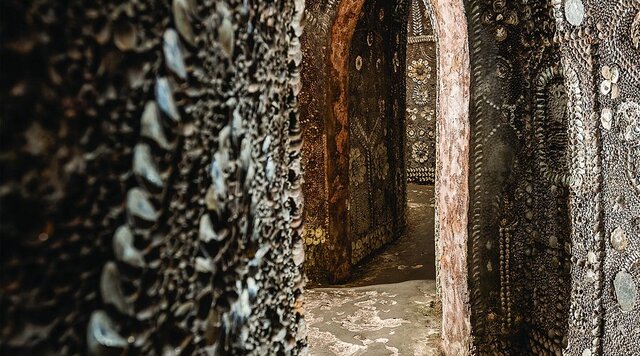
5. Artistic Undertaking
Finally, some have suggested that the Shell Grotto was simply the work of an artist or group of artists with a passion for beauty and mystery. The grotto’s elaborate craftsmanship and the effort required to collect millions of shells point to an ambitious artistic endeavor. Perhaps the grotto was a personal project meant to remain hidden from public view, a secret masterpiece created by a visionary individual or group. While this theory lacks the intrigue of a religious or mystical explanation, it highlights the Grotto’s stunning artistry.
The Intricate Craftsmanship
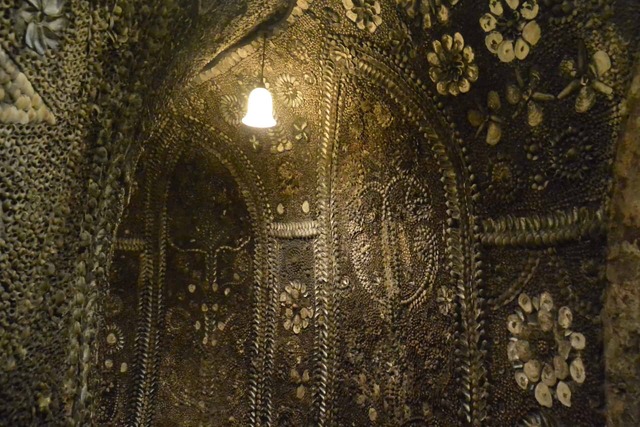
Regardless of its purpose, one thing is certain: the Shell Grotto is a masterpiece of craftsmanship. Over 4.6 million seashells, including whelks, oysters, mussels, and cockles, cover every inch of the grotto’s walls and ceilings. The shells are arranged in geometric patterns, floral motifs, and enigmatic symbols. The craftsmanship involved in the creation of the grotto is truly remarkable. The shells were likely gathered from nearby bays such as Walpole Bay, Pegwell Bay, and Sandwich Bay, although some of the species used in the mosaics, such as flat winkles, are not native to the area. This suggests that the creators of the grotto might have sourced shells from farther afield, adding another layer of mystery to its origins.
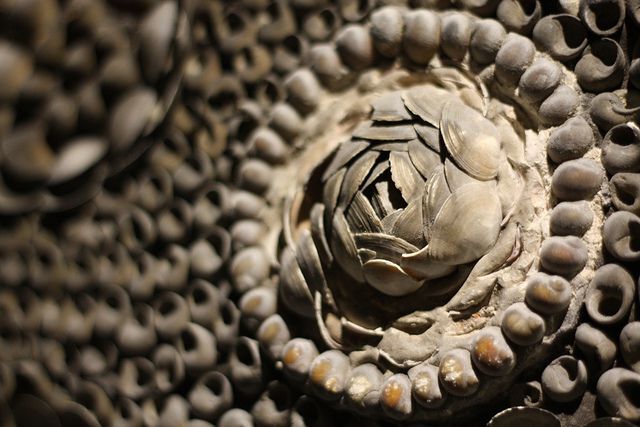
The sheer volume of shells required to cover the grotto’s walls and ceilings is staggering, and the precision with which they were arranged speaks to the skill and patience of the builder(s). The absence of documentation or oral traditions regarding the grotto’s construction makes it all the more fascinating. How long it took to create and who was responsible for it remains an unsolved puzzle.
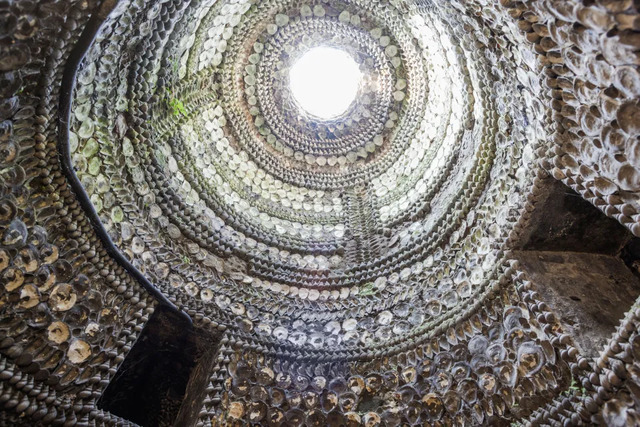
Modern Interpretations and Preservation Efforts
Today, the Shell Grotto is a Grade I-listed site and one of Margate’s most popular tourist attractions. Over the years, efforts have been made to preserve the grotto and its mosaics. Due to the fragile nature of the shells, the Grotto is vulnerable to damage from moisture, pollution, and human contact. A five-year conservation project, in collaboration with English Heritage, has helped protect the Grotto’s mosaics. The Roundel Project, launched in 2012, replaced some of the damaged mosaic panels to ensure the grotto’s survival for future generations.

Modern technology, including geophysical surveys, has been used to study the Grotto, but definitive answers about its origins remain elusive. Researchers have attempted to carbon date the shells, but the age of the shells does not necessarily correspond to the date of construction, adding to the challenge of uncovering its history. Despite these efforts, the mystery of the Shell Grotto endures.
The Allure of Mystery
The mystery of the Shell Grotto is part of what makes it so compelling. In a world where most things can be explained or understood, the Grotto stands as an enigmatic testament to human creativity and curiosity. Its origins, purpose, and creators may never be definitively known, but that uncertainty is what keeps people coming back to explore it. It invites visitors to speculate, to imagine, and to connect with a past that remains tantalizingly out of reach.

Video
Watch the video The Mysterious Shell Grotto of Margate: A History Still Unsolved to explore the enigma of this fascinating and ancient site.
Conclusion
The Shell Grotto of Margate remains one of the most fascinating and mysterious landmarks in the world. Whether it was a sacred temple, a whimsical folly, or a secret meeting place, its origins remain shrouded in mystery. What is certain, however, is that it is a stunning work of art and a testament to the human desire to create something beautiful and mysterious. For visitors to Margate, the Shell Grotto offers a rare opportunity to experience a piece of history that continues to defy explanation, leaving all who enter its depths with a sense of awe and wonder.

